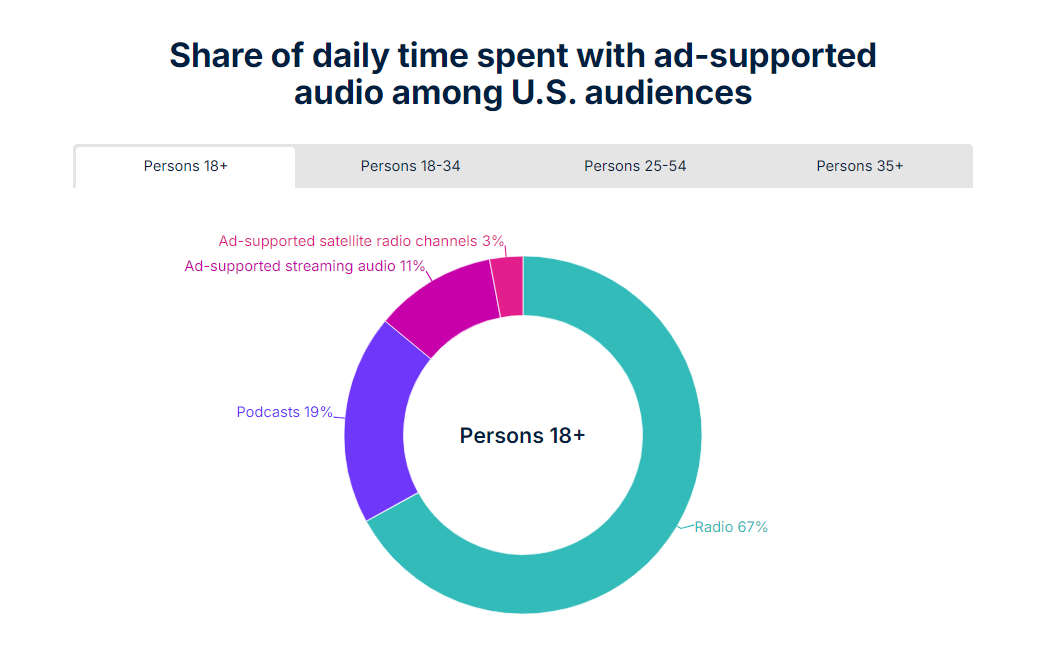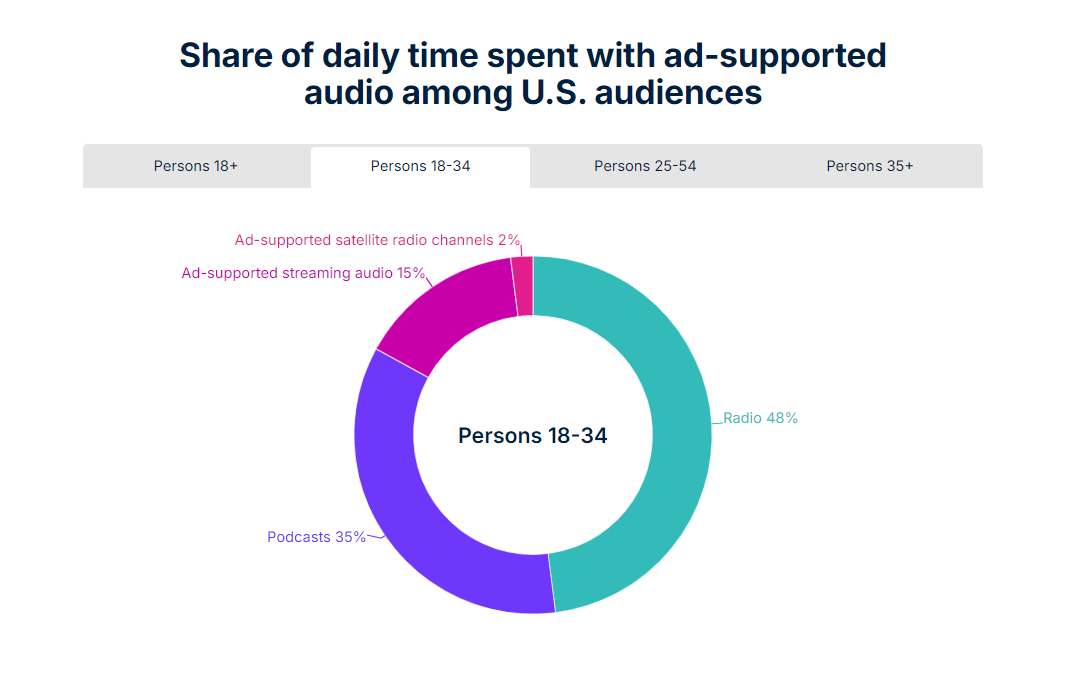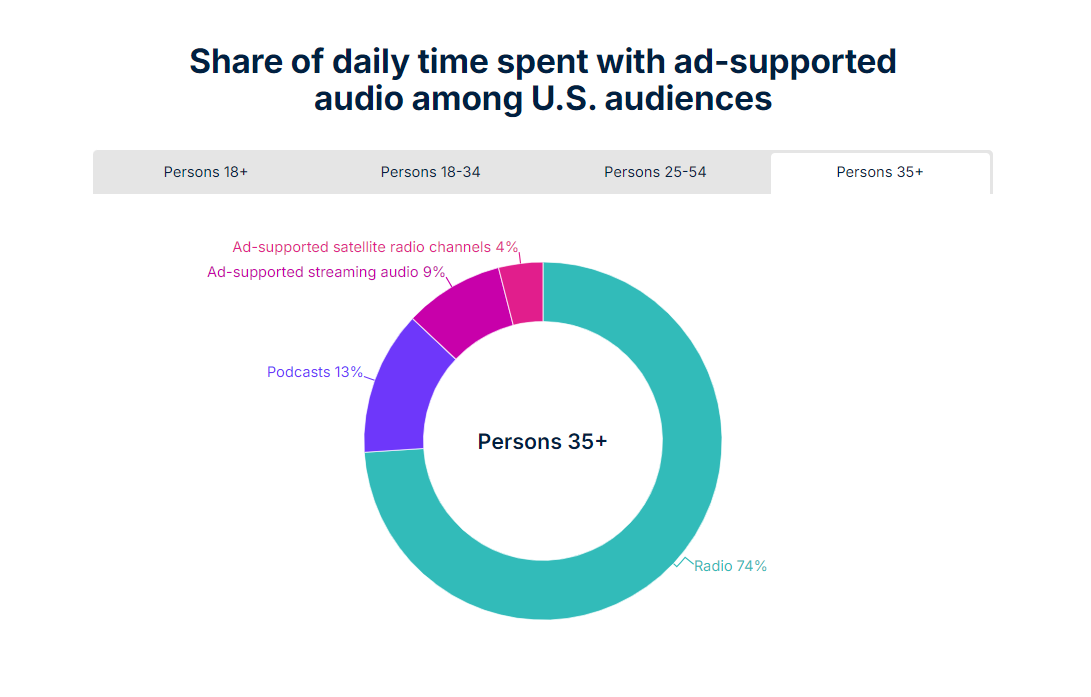New data reveals a fascinating trend in audio consumption: the average American spends an impressive 4 hours and 5 minutes daily engaged with audio media. Nearly 20% of their day is devoted to listening to radio, podcasts, music streaming services, and satellite radio. But what exactly are they tuning into, and where are they doing it?
According to a recent Q2 2024 report on audio listening trends powered by Nielsen and Edison Research, the digital landscape plays a significant role in our audio habits. We can access audio content at home, in cars, on public transport, at work, and while strolling down the street, making audio woven into the fabric of our daily lives.
The Dominance of Radio
Despite the rise of modern platforms like music streaming services, it might surprise many that traditional radio still captures most listeners’ attention. Nielsen reports that U.S. adults spend 67% of their ad-supported audio listening time with radio.

The Nilsen ”The Record: Q2 U.S. audio listening trends” article
Nielsen notes, “Radio, the original ad-supported audio platform, consistently reaches all corners of the population.” Among younger consumers, almost half of all daily ad-supported audio time is radio-focused. This highlights radio’s enduring appeal even as newer platforms emerge.

The Nilsen ”The Record: Q2 U.S. audio listening trends” article
Adults aged over 35+ spend 74% of their ad-supported audio listening time with radio, 13% on podcast and 9% on streaming audio.

The Nilsen ”The Record: Q2 U.S. audio listening trends” article
The Ad-Supported Audio Landscape
In contrast to radio’s significant share, ad-supported music streaming services account for only 11% of ad-supported listening among individuals over 18. Interestingly, podcasts are rising in popularity, capturing 19% of the attention among U.S. adults. This shift suggests that while music streaming is a staple, the allure of engaging podcast storytelling is resonating more deeply with listeners.
This data raises an intriguing question: is it time to reconsider the role of free music streaming? Some industry insiders argue that moving away from free streaming could better support artists, directing listeners towards premium services that substantially benefit creators.
A Game-Changer for Artists
Apple Music is already taking steps to bridge the gap between music streaming and radio. By leveraging Shazam’s recognition technology, Apple now offers artists insights into their radio plays across over 40,000 global stations through their Apple Music for Artists dashboards. This development underscores the ongoing importance of radio in audio consumption and provides valuable data for artists seeking to understand their reach and popularity.
Nielsen’s findings remind us that traditional radio remains vital to our audio experiences as we navigate the evolving audio landscape. While music streaming and podcasts are gaining ground, the statistics highlight a clear preference for radio among various demographics. Understanding these trends is crucial for brands and advertisers in adapting strategies that resonate with the audience’s listening behaviours. It appears that radio’s legacy endures despite the digital revolution—and it’s likely here to stay. As we look ahead, the question remains: how will the audio industry adapt to these findings, and what changes will come next in music and sound? Only time will tell.
Source: The Nilsen blog article:”The Record: Q2 U.S. audio listening trends”.



